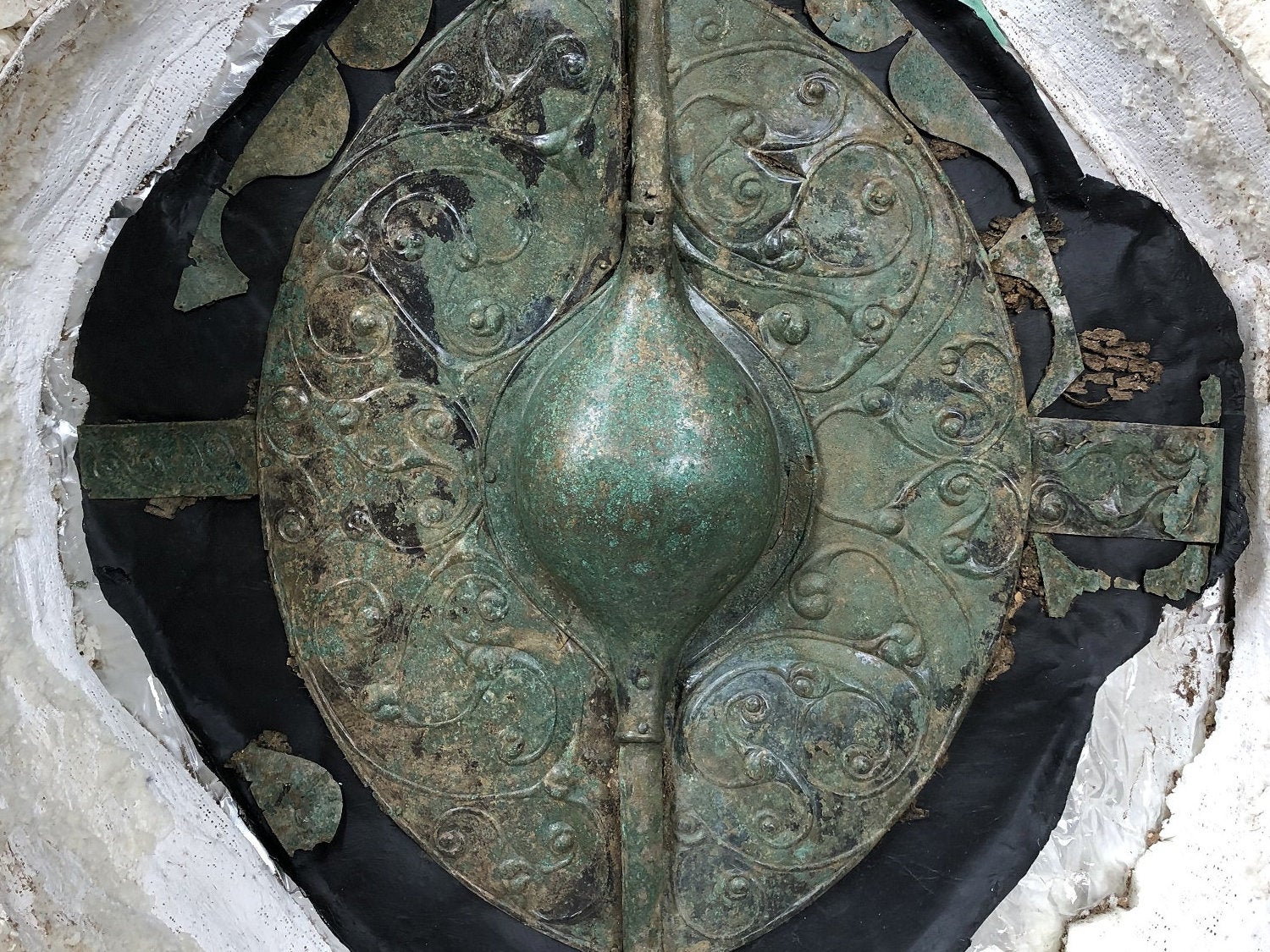Celtic warrior from 2,000 years ago buried in chariot with weapons and ponies hailed as most important find of its kind in UK
Expert says shield in burial site is 'most important British Celtic art object of the millennium'

A Celtic warrior’s grave containing weapons and upright pony skeletons has been described by experts as a unique and significant discovery for the UK.
A 2,000-year-old shield, which was found next to the ancient Briton’s remains, is “the most important British Celtic art object of the millennium”, said Dr Melanie Giles, of the University of Manchester.
Archaeologists said that the burial site in Pocklington, east Yorkshire, is the only one in the UK where modern archaeologists have found horses buried in a “chariot grave”.
About 20 humans buried inside chariots have been found in the past 100 years or so, mostly in Yorkshire – although not with horses.
Paula Ware, the director of Map Archaeological Practice, which excavated the grave, said: “The magnitude and preservation of the Pocklington chariot burial has no British parallel, providing a greater insight into the Iron Age epoch.”
The archaeologist called the shield an “incomparable” Iron Age find due to its “previously unknown design feature”.
She said its scalloped border “is not comparable to any other Iron Age finds across Europe, adding to its valuable uniqueness”.
“The popular belief is that elaborate metal-faced shields were purely ceremonial, reflecting status, but not used in battle,” she said. “Signs of repairs can also be seen, suggesting the shield was not only old but likely to have been well used.”
The Iron Age grave, the inhabitant of which is believed to have died between 320BC and 174BC, was initially dug up at a building site in the market town in 2018.
The ancient Briton’s body was placed in the chariot behind the horses, which were placed to look as if they were leaping out of the grave.
“This discovery provides valuable additional evidence demonstrating how the ancient Britons loved their chariots,” Dr Giles, a leading chariot-burial expert and archaeologist, said at the time.

“It is conceivable that the dead man’s family and his community believed that the chariot would help him to reach the next world or would be useful to him when he got there,” she said.
Persimmon Homes Yorkshire, who own the find, said they are planning to donate the discovery to a museum.
Scott Waters, director at the housebuilding firm, said: “The excavation at The Mile development is a truly magnificent discovery for British history and we feel this recognition and find should remain in the local area.”
Join our commenting forum
Join thought-provoking conversations, follow other Independent readers and see their replies
0Comments